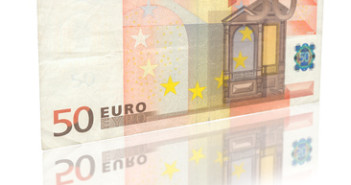EUR/USD remains steady after last week’s big gains. The markets are awaiting a decision on Wednesday from a German court on the legality of the ESM, the Eurozone’s bailout package. Other highlights this week are the FOMC meeting, where the Fed will decide whether to launch QE3 or not, and national elections in the Netherlands. In today’s releases, German WPI posted its best reading since February. Later today, US Trade Balance, a key indicator, will be released. The markets are predicting a larger deficit than the previous reading.
Here’s an update about technical lines, fundamental indicators and sentiment regarding EUR/USD.
EUR/USD Technical
- Asian session: Euro/dollar moved up to 1.2793 and then retracted, consolidating at 1.2762. In the European session, the pair has moved upwards, and was testing the 1.28 line.
- Current range: 1.2750 to 1.2814.
Further levels in both directions:Â 
- Below: 1.2750, 1.2670, 1.2624, 1.2587, 1.2520, 1.2460, 1.24, 1.2360, 1.2330 and 1.2250.
- Above: 1.2814, 1.29, 1.2960, 1.30, 1.3060, 1.3105, 1.32 and 1.3290.
- 1.2814 is providing weak resistance, and looks to be tested.
- 1.2750 has strengthened in support as the pair trades higher.
Euro/Dollar steady prior to ESM decision – click on the graph to enlarge.
EUR/USD Fundamentals
- 5:30 French Final Non-Farm Payrolls. Exp. -0.1%. Actual -0.1%.
- 6:00 German WPI. Exp. 0.3%. Actual +1.1%.
- 12:30 US Trade Balance. Exp. -44.2B.
EUR/USD Sentiment
- German Court to Rule on ESM: On September 12th, Germany’s Constitutional Court will hand down a decision on the legality of the European Stability Mechanism as it stands for Germany. The court’s ruling is required in order to ratify the ESM proposal by EU officials. Opponents of the ESM say it is unconstitutional and will harm Germany’s economy. In a dramatic development on Monday, a German parliamentary report stated that the ESM law violates the budgetary rights of the German parliament. Will the Constitutional Court be influenced by this report in its decision? The Court is expected to vote in favor of the proposal, but the markets will be watching carefully, as a decision that the ESM is unconstitutional would trigger huge market turmoil and could lead to the breakup of the euro.
- OMT announcement boosts euro: After relentless criticism of the ECB for its tepid response to the debt crisis, we can safely say that Draghi delivered. The ECB presented the Outright Monetary Transactions program: unlimited bond buying of bonds up to three years in maturity, provided that the country asks for aid. Draghi even lent Spanish PM Rajoy a helping hand by enabling bond buying also in case of a “precautionary program†– a soft bailout and not only a full adjustment one. The ECB left rates unchanged for now, but a cut is looking more likely in October.
- Dutch go to the polls: The Netherlands has traditionally been a close ally of Germany, but the anti-Euro sentiment has been increasing, especially with the debt crisis and fiscal problems faced by Greece and Spain. Analysts are predicting a fragmented parliament that will lead to a coalition government. The new government could well demonstrate less enthusiasm for the euro-zone and less support for Germany at a critical juncture for both the zone and the continental currency.
- Spain expected to ask for aid from ECB: Spanish PM Rajoy hosted German Chancellor Merkel in Madrid and Spain is getting closer to asking for aid. This will likely occur after the German court rules on the ESM and as European finance ministers convene. After Catalonia asked for 5 billion euros of aid, also its southern neighbor joined in and banks are also tapping into the government’s limited resources. Unemployment in Spain is on the rise and the flight of capital is getting worse. There was no no good news on the banking front either –  after reporting heavy losses, Bankia will receive an injection of 4.5 billion euros from Spain’s state bank bailout fund. To add to the toxic mix, separatist fervor is flexing its muscles in Catalonia, with a huge pro-independence rally scheduled for Tuesday in Barcelona.
- QE or no QE?: US Non-Farm payrolls were a big disappointment, and with it speculation is rising that the Fed will respond with more dollar printing. The economy added 96,000 non-farm payrolls in August, well below the market estimate of 125,000 jobs. Will this be enough to prod the Fed into action? Bernanke’s speech in Jackson Hole reiterated that the the Fed would not step in unless economic conditions warranted such a move. Analysts are divided as to what happens now – a Reuters poll after the weak NFP numbers found that 60% of economists believe that the Fed will bring in QE3 this week, up from 45% percent in August.
- Greece coalition squabbles as troika returns: Greece’s 3 coalition partners are still unable to agree on new austerity, as the troika delegation lands in Athens. In the meantime, anti-austerity parties gain traction in the polls, and unemployment figures are terrible, as the unemployment rate rose to a staggering 24.4%, up from 23.5%.



